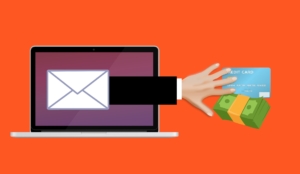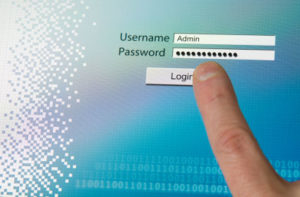How to Protect Your Email from Hackers
It is easier than you might think to secure your email from hackers. The number one thing you can do is set up two step verification. Even if your username and password is compromised, bad guys will still need your mobile phone to access your account. And of course, never ever click on any links that come through your email unless you are positive it’s coming from a trusted sender. Not clicking on those links is easier said, than done, and even though is sometimes not enough.
 Hackers have a saying – “Own the email, and you’ll own the person.” If you get hacked, the scammers will now have access to many, if not all, of the accounts that are associated with your email address.
Hackers have a saying – “Own the email, and you’ll own the person.” If you get hacked, the scammers will now have access to many, if not all, of the accounts that are associated with your email address.
How do they get access? Well, they send phishing emails, which look very much like real messages from a source you trust like UPS, PayPal, the IRS, your bank, a friend, your mom, etc.
Even people who seem smart or those who are in leadership positions can get tricked into clicking links in emails. Even John Podesta, who was the campaign chairman when Hillary Clinton, fell for a hack like this. He clicked on a link that seemed like it was from Google, but really it was a hacker…and that hacker got into his entire email account.
Don’t Let a Hacker Get Into Your Email Account
If you see a link and you want to or are supposed to click it, there are a few things you should do:
- Hover your mouse over the URL to see if it looks strange. If the email says it’s coming from Chase Bank, but the URL looks like a bunch of nonsense, it’s probably not safe to click.
- Many times, however, the URL can look very legitimate. So, you want to look for some other signs.
- Look at the email for things like misspellings, grammar mistakes, or other odd things.
- When in doubt, contact the sender via telephone
Additional Tips
- If you see some type of urgency in the email, such as your account being compromised or your account being suspended, don’t be so quick to click.
- There might also be some good, unexpected news in the email that you want to click…but again, be smart and only click if you are absolutely sure.
- Is the message telling you that you must re-set your password? Be careful here. It’s likely a scam.
Emails from UPS, the IRS, PayPal, a major retailer, or your bank could also be suspicious, so again, don’t click until you are totally sure the link is safe.
Tips for Protecting Your Account
Here are some final tips that you can use to protect your account:
- Employers need to engage security awareness training in the form of phishing simulation training.
- Use strong passwords that are long and difficult to guess. They should be mixed with letters, numbers, and symbols.
- Use two-factor authentication for all accounts, including your email account.
- Don’t click on attachments unless you know exactly what they are.
When you really think about it, protecting your email account is one of the most important things that you can do to keep your information safe. Everything here is simple to do and understand, and it can make a big difference in your life, especially when you consider how easy it is to get hacked.
Written by Robert Siciliano, CEO of Credit Parent, Head of Training & Security Awareness Expert at Protect Now, #1 Best Selling Amazon author, Media Personality & Architect of CSI Protection Certification.

 However, there is also the possibility that someone could pose as you and get your Informed Delivery. This means that they could get your mail before you do.
However, there is also the possibility that someone could pose as you and get your Informed Delivery. This means that they could get your mail before you do. This all sounds pretty dreary, but it’s not all bad. Research is showing that many industries in the US are making strides against these fake emails, though some are working harder than others.
This all sounds pretty dreary, but it’s not all bad. Research is showing that many industries in the US are making strides against these fake emails, though some are working harder than others. The best thing that you can do is to use the provider to find the old email account or old messages. All of the major providers, including Outlook, Gmail, Yahoo, and AOL, have recovery tools available. If the email address is from a lesser player in the email game, again, you might be out of luck.
The best thing that you can do is to use the provider to find the old email account or old messages. All of the major providers, including Outlook, Gmail, Yahoo, and AOL, have recovery tools available. If the email address is from a lesser player in the email game, again, you might be out of luck. That’s what’s happening with business executives in select industries (e.g., chemical operations, manufacturing), says a report at threatpost.com, citing a finding from Dell SecureWorks.
That’s what’s happening with business executives in select industries (e.g., chemical operations, manufacturing), says a report at threatpost.com, citing a finding from Dell SecureWorks. The hackers first learn the name of a company’s CEO or other key figure such as the company’s lawyer or a vendor. They then figure out a way to make an e-mail, coming from them, appear to come from this CEO, and send it to employees.
The hackers first learn the name of a company’s CEO or other key figure such as the company’s lawyer or a vendor. They then figure out a way to make an e-mail, coming from them, appear to come from this CEO, and send it to employees.



























